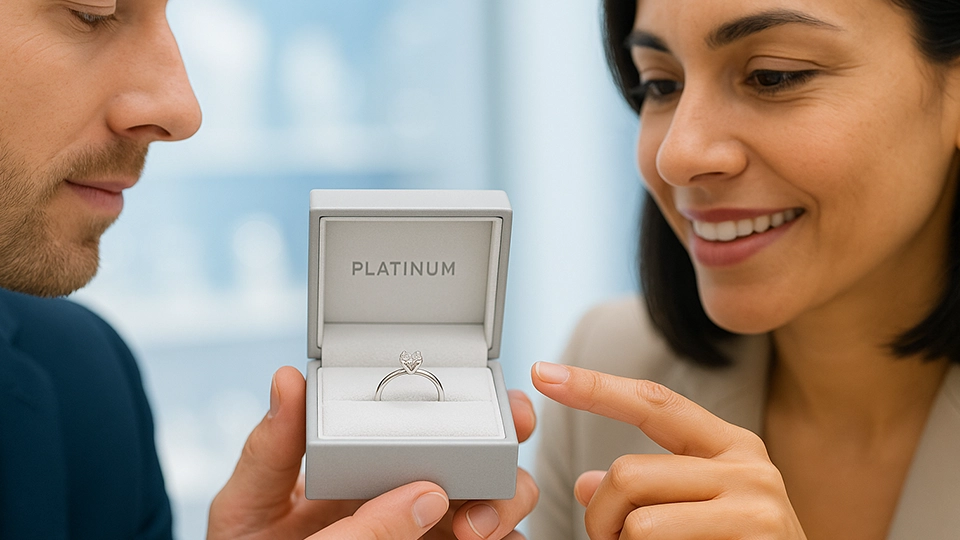It is surprisingly common for sales professionals to focus on the design or price of a piece without ever naming the metal it is made from. This oversight can reduce the perceived value of the jewellery, especially when it comes to platinum. Customers may admire the look but leave unaware that they were viewing one of the most precious and enduring metals available. The opportunity to educate and inspire confidence is missed.
A More Effective Approach
Make it a habit to name the metal early in the conversation. Treat it as a fundamental part of the product story, not a technical detail. Emphasising that a piece is made from platinum, for example, allows you to open a discussion about its qualities—such as durability, rarity, and natural whiteness—and set it apart from lower-value alternatives without comparison.
Putting It Into Practice
When showing a ring or pendant, begin with: “This is one of our platinum pieces.” Then continue with: “Platinum is prized for its strength and timeless beauty. It is naturally white, so it will not fade or need replating over time.” This small addition places the metal at the centre of the value story and signals to the customer that they are considering something exceptional.
The Impact on Engagement
Customers become more interested and invested when they understand what they are buying. Naming the metal invites questions, encourages conversation, and helps shift the dialogue from price to value. It builds a clearer connection between the product and the customer’s priorities, whether that is longevity, symbolism, or investment.
The Professional Advantage
Over time, consistently naming and explaining the metal enhances your authority as a jewellery expert. It positions you as someone who understands the full story behind every piece and can guide customers confidently. This builds trust, improves conversion rates, and reinforces your role as a professional advisor.
The Big Picture
“Salespeople who educate their customers and create transparency increase customer trust by 60 percent.” — Deloitte, ‘The Value of Trust in the Consumer Experience’















